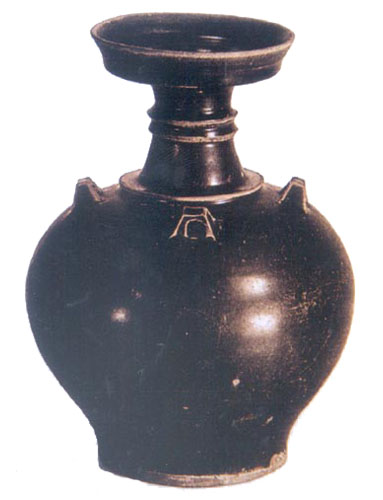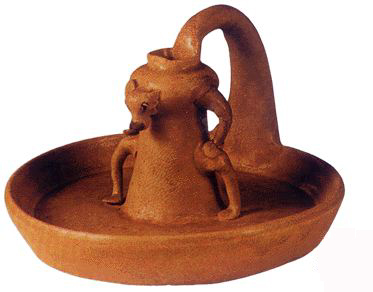The Eastern Jin Dynasty lasted from 317 to
420. After the downfall of the Western Jin, Sima Rui, Emperor Wudi of the Jin,
restored the Jin Dynasty in Jiankang (south of Nanjing City, Jiangsu Province),
historically known as the Eastern Jin Dynasty.
 |
| Black-glazed four ringed plate-mouth
pot |
In 383, the ruler of the former Qin in the north
launched an attack on the Eastern Jin and the two fought at Feishui. Although
the Eastern Jin army defeated the former Qin troops, the victory of the northern
expedition could not save the Eastern Jin from falling due to internal conflicts
and contention for power. In 420, General Liu Yu deposed the Emperor of the
Eastern Jin, and took over the throne and replaced the Eastern Jin with the Song
Kingdom, known as the Southern Dynasties (three successive dynasties).
 |
| Ox-shaped oil lamp |
Although the
Eastern Jin occupied a small territory, it achieved many great cultural
successes. During this period Buddhism was introduced to China, and the Xuan
Xue School and Taoism also enjoyed a great influence. At the same time,
literature, painting and calligraphy also reached a high level of
development.
In northern China, upper classes of many
minority groups and bureaucratic landlords set up their own regimes one after
another. Altogether, there were 16 states that had emerged during 130 years --
from the establishment of the Han state by Liu Yuan to the reunification of the
northern part by the Northern Wei. This period was historically called the
Sixteen States.


